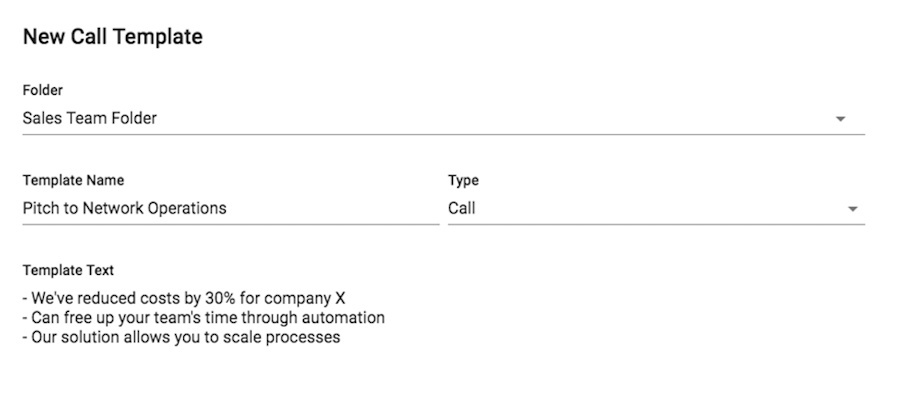With call tracking, building a list of prospects to call feels simple. Sales scripts are ready to roll. Planning the weekly sales meeting is pretty routine.
The more challenging part is reading the story in your data. You need to tie calls, sales results, and lead sources together. The real work is to know your customers and how money actually arrives.
But with call tracking? Your entire organization has the transparency it needs to flourish. With call tracking data, your sales reps can understand who their customers truly are and how to approach them in a meaningful way.
In this article, you’ll learn how to use call tracking software to book more meetings and win more deals. You’ll also discover how to use call analytics to improve customer service and build a long-term relationship with your customers.
Key Takeaways
Learn how call tracking and revenue intelligence reveal lead sources, real customer needs, and drive more meetings and revenue.
- Use unique numbers per source.
- Centralize calls in software, record, attribute, and track metrics.
- Build orchestrated campaigns by segment.
- Coach calls in real time.
- Inform callers, store data securely.
Why Revenue Intelligence Matters for Sales Teams
You’ve seen it before. That one sales rep who keeps analyzing their CRM platforms (customer relationship management) for missing puzzle pieces is always on the lookout for new opportunities.
Or that one sales team that hosts meeting after meeting, trying to uncover who their customers truly are. Unfortunately, when sales teams try to understand their customers through obscure data, they struggle to make out who their customers are.
Combing through distorted data in their CRMs at best leads them to create their version of the truth. Keywords: their version of the truth.
But it doesn’t have to be this way.
When sales teams adopt revenue intelligence, they gain the clarity needed to understand who their customers truly are, how customers found the organization, and how to establish a relationship with them.
So, what’s revenue intelligence, really?
Revenue intelligence is simply how sales teams unify the company with fresh data based on real customer interactions — not opinions. It’s how teams come to realize customer reality.
In other words, revenue intelligence helps sales teams understand their customers on a deeper level. By using a series of revenue intelligence features, such as advanced activity capture and accurate Salesforce reporting, teams can get the clarity they need in seconds.
![]()
Some additional benefits of using revenue intelligence features include:
- Helps you build a sales process that’s based on reality, not opinions
- Gives you a complete view of customer interactions
- Using automation to prevent wasting time on manual data entry
- Presents data in real-time
- Prevents information silos and connects the entire sales team
- Decreases obscurity and increases transparency
Now that we’re clear on revenue intelligence, let’s take a look at two crucial steps you need to maximize the profitability of every call.
Step 1: Understand Your Pipeline
Before you can book more meetings and increase sales, you need to closely understand your pipeline. Here are two tips to help you gain more clarity about your pipeline:
1. Implement Unique Phone Numbers for Each Campaign/Source
Determining how your customers find you is crucial to understanding your pipeline as accurately as possible. A simple way to track how customers find you is by connecting a unique phone number to every campaign/source you have. So, from Facebook posts to email newsletters to paid ads, be sure to include a unique phone number in each source.
You should be able to obtain a variety of phone numbers within your sales software program. Or through Google Voice. For instance, for trust-based businesses, call tracking plays an essential role in collecting and qualifying leads.
By implementing unique phone numbers for each source, companies can easily track where their leads came from and create better-orchestrated campaigns for each lead source in the future.
2. Use Call Tracking Software for Complete Visibility
Call tracking platforms (or inbound call centers) give sales teams complete visibility over their accounts, sales statuses, deals, and critical customer data.
Additionally, call tracking software also has calling features that allow sales reps to contact leads directly from the platform, record the call, and record prospect information.
You can also use call tracking software to track call notes, log sales outcomes, and attribute sales calls to corresponding campaigns.
Here are some quick tips to help you make the most of using call tracking software:
- Adjust your call settings to configure how your organization’s calls will get logged into Salesforce
- Create custom account lists to keep track of the communication, conversations, meetings, next steps, and progress your team is making within your target accounts
- Use email templates to follow up after calls and opt-ins easily
- Encourage customers and leads to sign up for your email newsletter when you’re on a call
- Decide which metrics to track for inbound calls (i.e., previous interactions, PPC/landing page performance) and outbound calls (i.e., call volume, lead sources, triggers/objections)
- Track call analytics to understand where revenue is coming from — use that information to improve your revenue operations.
- Have contract management software ready for customizing, negotiating, and e-signing sales contracts
![]()
Note that when you use call tracking software, it’s essential to inform your leads that all calls are being tracked for security reasons.
It’s also essential that your organization stores call data in a secure data center infrastructure to prevent exposing sensitive customer information.
Step 2: Book More Meetings and Win More Deals with Call Tracking
Once you closely understand your pipeline, use the call data you’ve gathered to personalize your sales campaigns. The more personalized and relatable your campaigns are, the easier it’ll be to build long-term relationships with your customers.
Below are three ideas you can start using right away for call tracking.
1. Create Orchestrated Campaigns
Understanding your pipeline in detail means being able to create sales funnels (automated, multi-step, multi-channel flows) that allow your reps to scale in a personalized and relevant way.
For instance, if you’ve discovered your leads are primarily generated from LinkedIn, your reps can dump more eggs in those baskets. If email marketing is outperforming calls, reps can dial up email campaigns.
To create orchestrated campaigns with ease, make a list of the most common ways people find you. For instance, on or through:
- Email marketing
- Referrals
Then, segment each lead group by source, like this: leads from:
- Email marketing
- Referrals
Next, make a list of each lead segment’s needs, pain points, and how you can help them solve both. Then, add a few lead magnet ideas for each lead group.
Finally, include sales copy ideas for each segment, highlighting how you can solve pain points and nurture needs.
Once you’re clear on the above, map out an automated funnel for each lead segment. Be sure to have a clear plan for the lead magnet you’ll be using at the top of the funnel.
And be sure also to have a clear plan mapping out the customer journey all the way through the funnel. For instance, your LinkedIn funnel might look like this:
- Offer the lead magnet, i.e., a webinar for graphic designers
- Collect the lead info every time a lead registers for the webinar
- Send a welcome email and provide the link to the free webinar
- At the end of the webinar, invite the lead to a virtual sales demo
- At the end of the sales demo, invite the lead to make their first purchase
2. Use ‘Call Coaching’ Features
Call coaching is a brilliant feature that lets your call tracking provider admin or team lead:
- Listen to any ongoing phone calls to support the rep
- Join the call to speak with the prospect and nurture the relationship
- Send a private message to the sales rep to provide real-time advice
To make the most out of call coaching features, it’s essential to make a plan. Meet with your team to decide when managers should plan to listen to on calls, provide support, and give feedback.
3. Use Call Templates for Call Tracking
Use customizable call templates to keep track of personalized points you want to bring up when making cold calls.

When customizing your call templates, be sure to create separate templates for each persona you’re reaching out to.
Why?
Different lead segments respond to different value propositions. For instance, a marketing director may find your product valuable for a different reason than a customer service director would. And a student may find your product valuable for a different reason than a single parent would.
Final Word on Call Tracking
A lack of customer transparency keeps sales teams stuck and sales reps frustrated. But when your team understands how to use revenue intelligence and call tracking software, you gain the clarity you need to build lasting customer relationships and close more deals.
Ready to turn insights into action?

Jeremy is co-founder & CEO at uSERP, a digital PR and SEO agency working with brands like Monday, ActiveCampaign, Hotjar, and more. He also buys and builds SaaS companies like Wordable.io and writes for publications like Entrepreneur and Search Engine Journal.



0 Comments